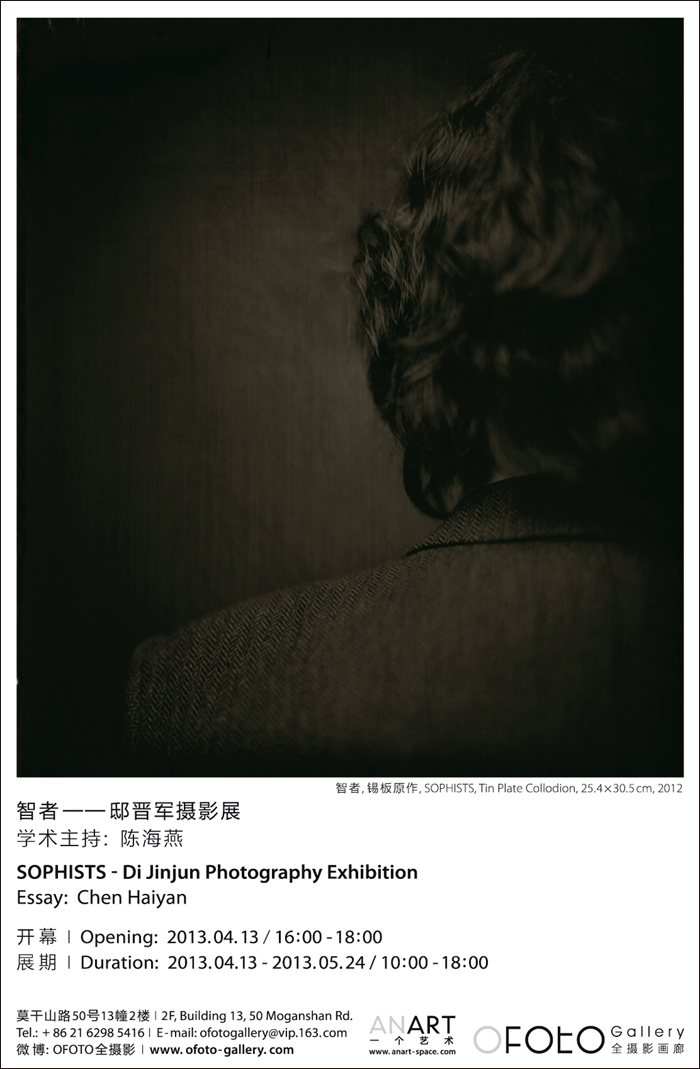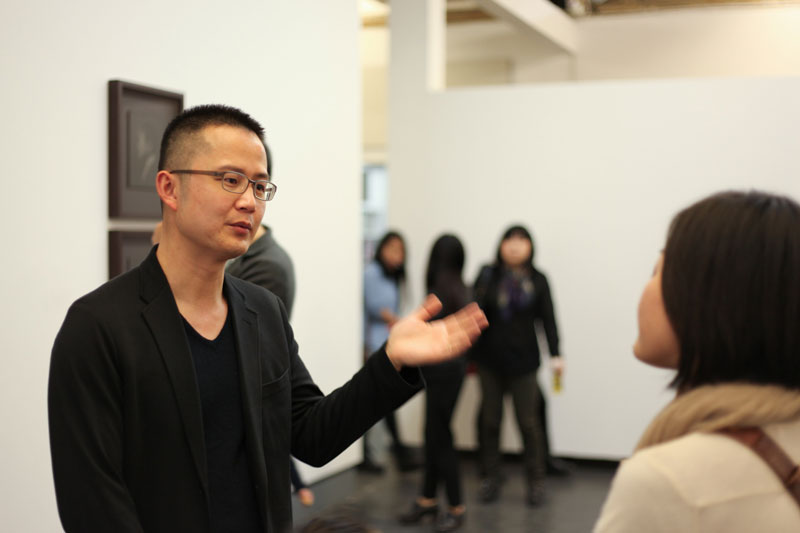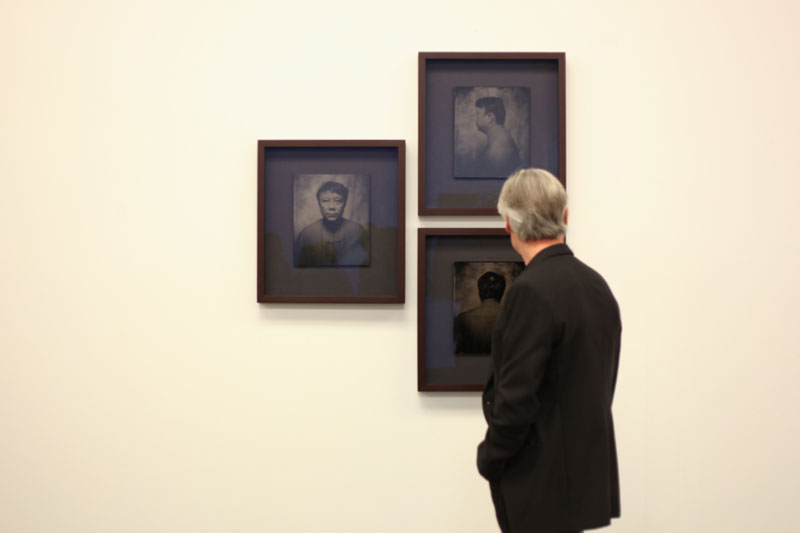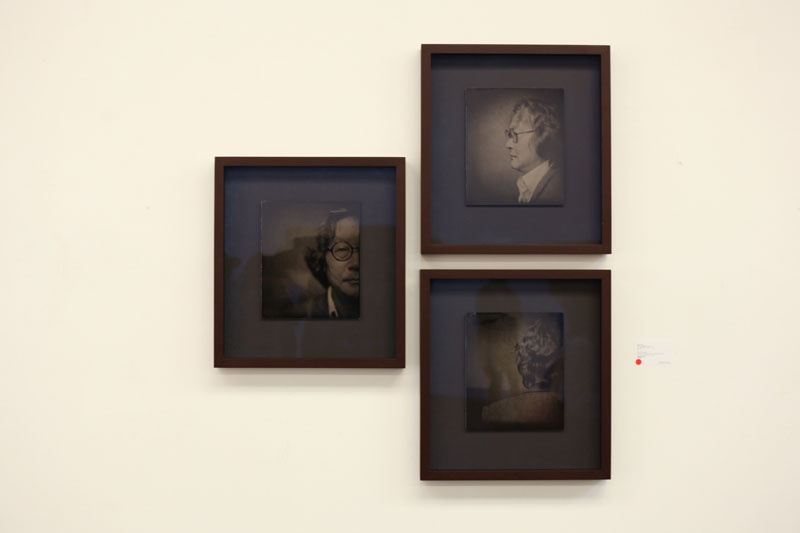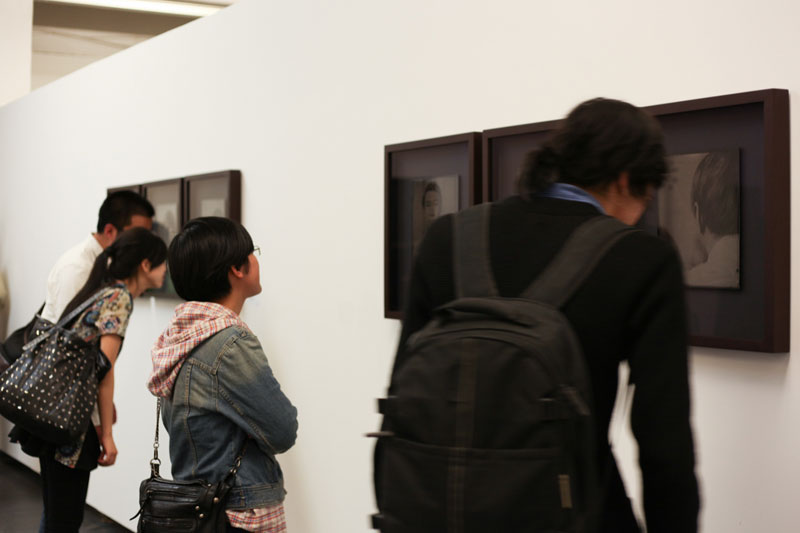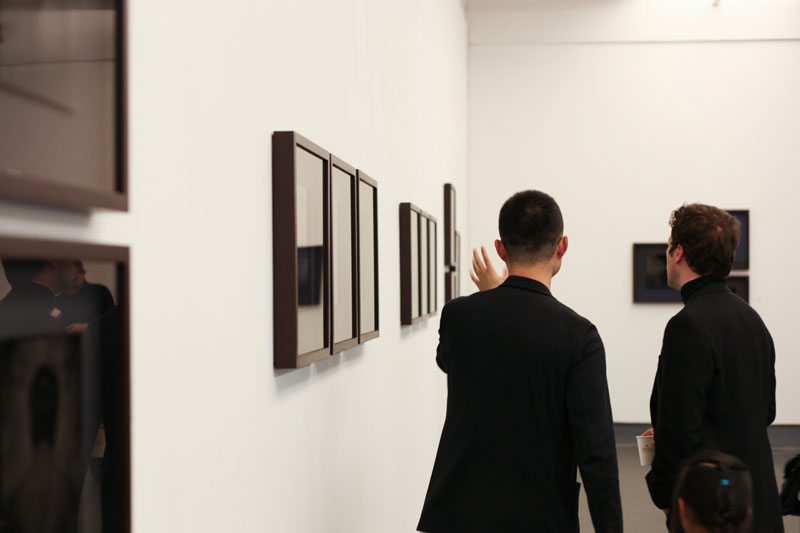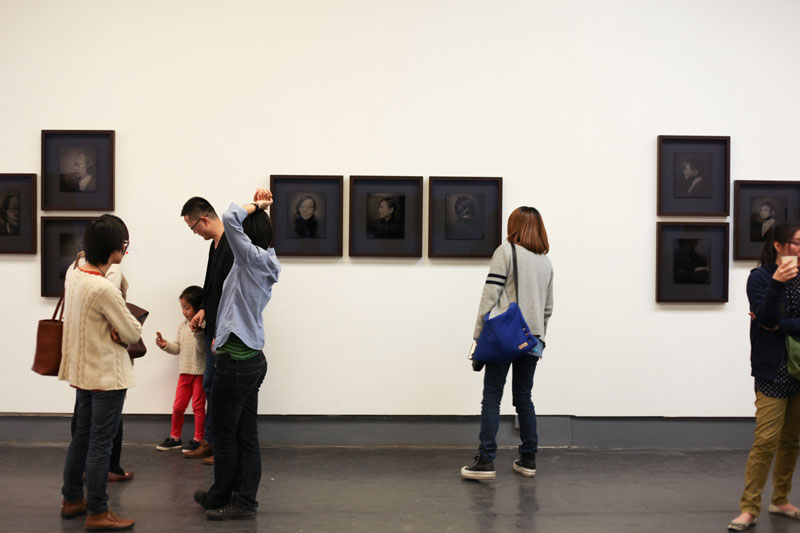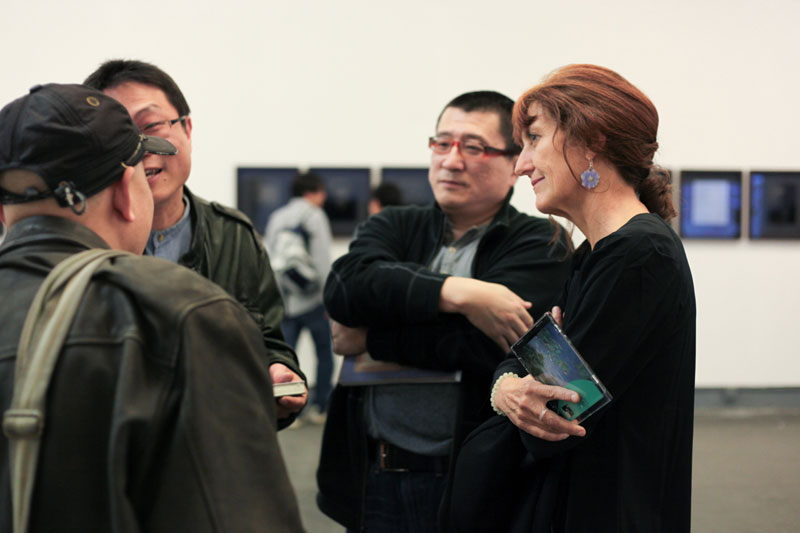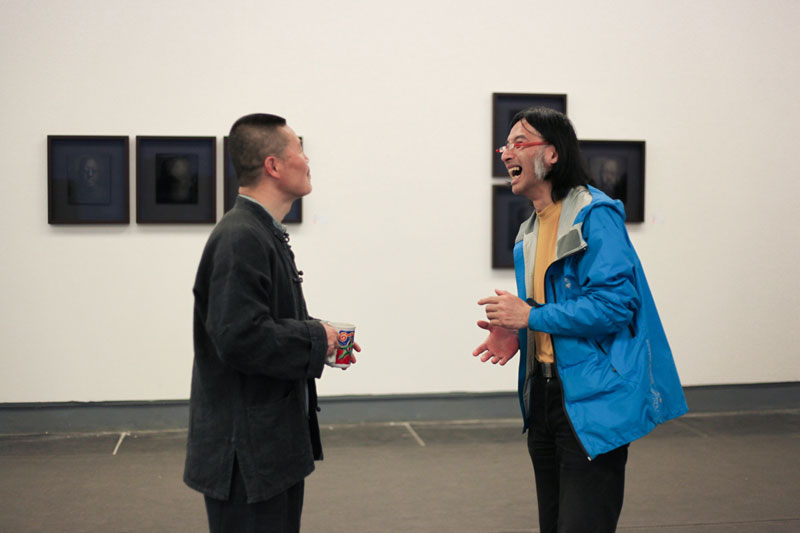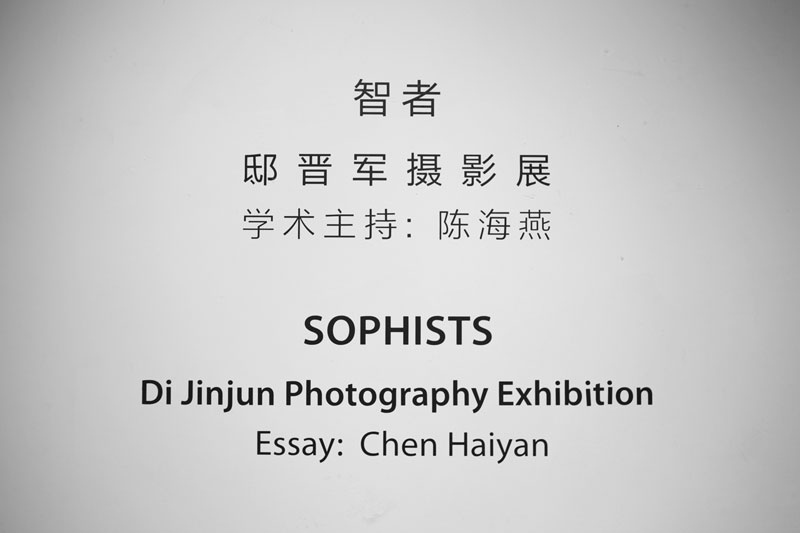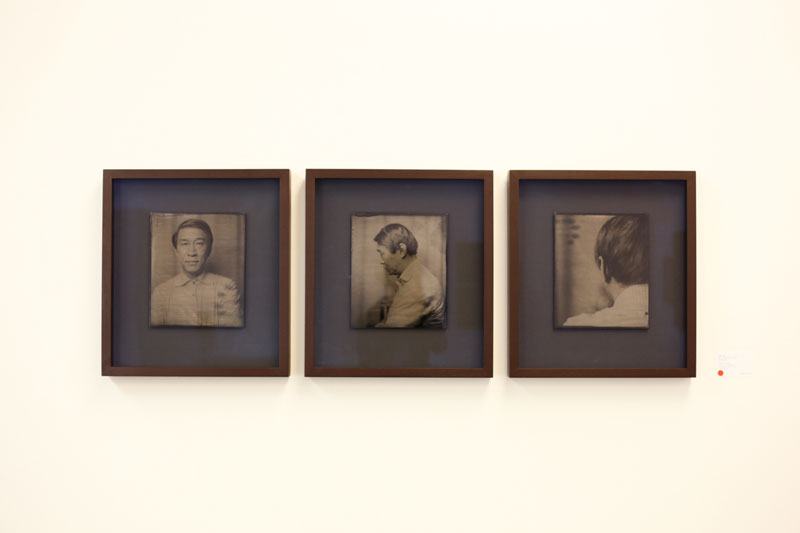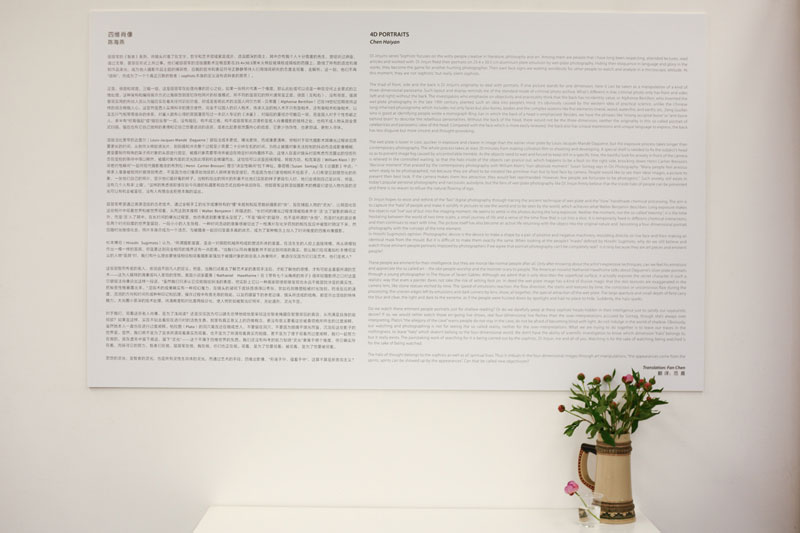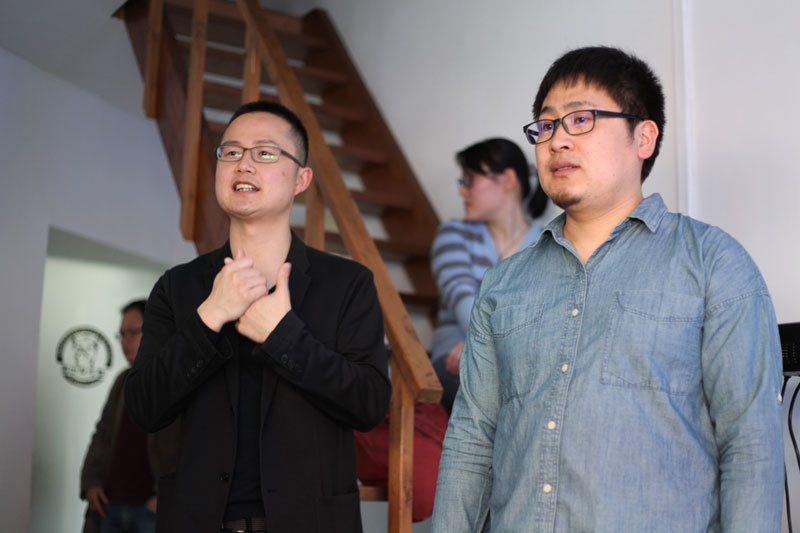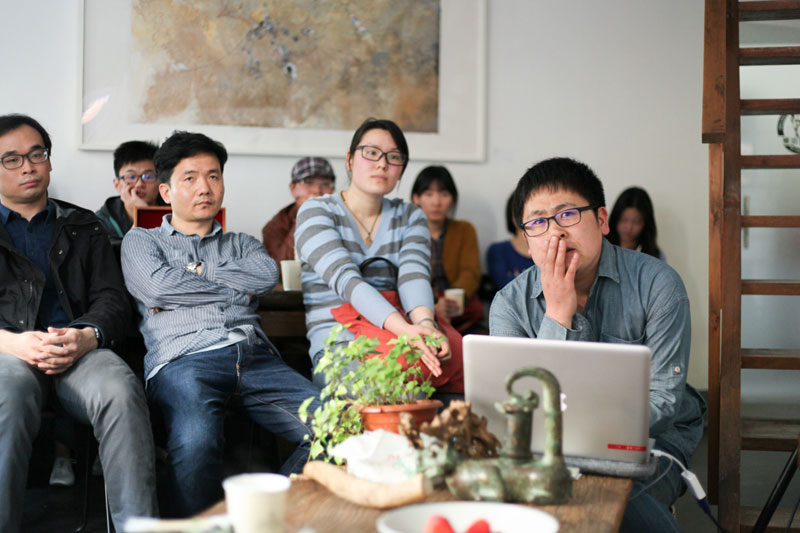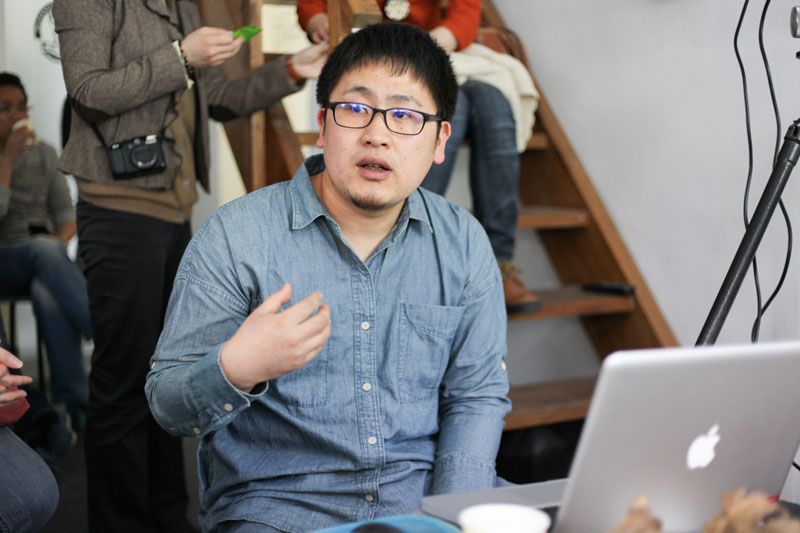4D Portraits
by Chen Haiyan
Di Jinjun’s series ‘Sophists’ focuses on the witty people creative in literature, philosophy and art. Among them are people that I have long been respecting, attended lectures, read articles and worked with. Di Jinjun fixed their portraits on 25.4 x 30.5 cm aluminum plate emulsion by wet-plate photography. Hiding their eloquence in language and glory in the works, they become the game for another hunting photographer. Their own face signs are waiting wordlessly for other people to watch and analyze in a microscopic attitude. At this moment, they are not ‘sophistic’ but really silent sophists.
The triad of front, side and the back is Di Jinjun’s originality to deal with portraits. If one picture stands for one dimension, here it can be taken as a manipulation of a kind of three-dimensional panorama. Such layout and display reminds me of the standard mode of criminal photo archive. What’s different is that criminal photo only has front and sides (left and right) without the back. The investigators who emphasize on objectivity and practicality think that the back has no identity value, or Alphonse Bertillon, who invented the wet-plate photography in the late 19th century, planted such an idea into people’s mind. It’s obviously caused by the western idea of practical science, unlike the Chinese long-inherited physiognomy which includes not only faces but also bones, bodies and the complex systems like five elements (metal, wood, water,fire, and earth), etc. Zeng Guofan who is good at identifying people wrote a monograph Bing Jian in which the back of a head is emphasized. Besides, we have the phrases like “strong occipital bone” or “anti-bone behind brain” to describe the rebellious personalities. Without the back of the head, there would not be the three-dimension, neither the originality in this so called portrait of celeberities and panoramic view of the head. Compared with the face which is more easily revealed, the back also has unique expressions and unique language to express; the back has less disguise but more sincere and thought-provoking.
The wet-plate is lower in cost, quicker in exposure and clearer in image than the earlier silver plate by Louis-Jacques-Mandé Daguerre, but the exposure process takes longer than contemporary photography. The whole process takes at least 20 minutes from making collodion film to shooting and developing. A special shelf is needed to fix the subject’s head so as to prevent image fog caused by uncontrollable tremble. As the objects need to wait and forced to keep still in a specific time, the bashful look for anxiety in front of the camera is relieved in the controlled waiting, so that the halo inside of the objects can prance out, which happens to be a fault on the right side, knocking down Henri Cartier-Bresson’s “decisive moment” that praised by the contemporary photography with William Klein’s “non-absolute moment”. Susan Sontag says in On Photography: “Many people feel anxious when ready to be photographed, not because they are afraid to be violated like primitive man but to lose face by camera. People would like to see their ideal images, a picture to present their best look. If the camera makes them less attractive, they would feel reprimanded. However, few people are fortunate to be photogenic”. Such anxiety still exists in today’s popular personal photography and narcissistic autodyne, but the fans of wet-plate photography like Di Jinjun firmly believe that the inside halo of people can be presented and there is no reason to refuse the natural flowing of ego.
Di Jinjun hopes to resist and rethink of the “fast” digital photography through tracing the ancient technique of wet-plate and the “slow” handmade chemical processing. The aim is to capture the “halo” of people and make it solidify in pictures to see the world and to be seen by the world, which achieves what Walter Benjamin describes: Long exposure makes the objects not “live” out of but into the imaging moment. He seems to settle in the photos during the long exposure. Neither the moment, nor the so-called “eternity”, it is the time hesitating between the world of two time scales, a small journey of life and a sense of the time flow that is cut into a slice. It is temporarily fixed in different chemical interactions, and then continues to react with time. The picture itself has also become an active life returning with the object into the original nature and becoming a four-dimensional portrait photography with the concept of the time element.
In Hiroshi Sugimoto’s opinion: Photographic device is the device to make a shape by a pair of positive and negative machinery, moulding directly on live face and then making an identical mask from the mould. But it is difficult to make them exactly the same. When looking at the people’s “masks” defined by Hiroshi Sugimoto, why do we still believe and watch those eminent people portraits imposed by photographers if we agree that portrait photography can’t be completely real? Is it only because they are art pieces and eminent people?
These people are eminent for their intelligence, but they are mortal like normal people after all. Only after knowing about the artist’s expressive techniques, can we feel his emotions and appreciate the so called art – the idol people worship and the monster scary to people. The American novelist Nathaniel Hawthorne talks about Daguerre’s silver plate portraits through a young photographer in The House of Seven Gables: Although we admit that it only describes the superficial surface, it actually exposes the secret character in such a realistic way that even a painter dares not take the risk of setting foot on. In deed the wet-plate image has a kind of illusive magic that the skin textures are exaggerated in the camera lens, like stone statues etched by time. The speed of emulsions reaction, the flow direction, the stains and textures by time, the conscious or unconscious flaw during the processing, the uneven edges left by emulsions and dark corners by lens, show, all together, the special attraction of the wet-plate. The large aperture and small depth of field carry the blur and clear, the light and dark to the extreme, as if the people were hunted down by spotlight and had no place to hide. Suddenly, the halo sparks.
Do we watch these eminent people portraits just for shallow reading? Or do we darefully peep at these sophists’ heads hidden in their intelligence just to satisfy our voyeuristic desire? If so, we would rather watch those on-going live shows, real four-dimensional live fleshes than the over-interpretations accused by Sontag, though she’s always over interpreting. Plato’s “the allegory of the cave” warns people do not stay in the cave, do not be afraid of becoming blind with light, do not indulge in the world of shadow. Obviously, our watching and photographing is not for seeing the so called reality, neither for the over-interpretations. What we are trying to do together is to leave our traces in the nothingness, to leave “halo” which doesn’t belong to the four-dimensional world. We don’t have the ability of scientific investigation to know which dimension “halo” belongs to, but it really exists. The painstaking work of searching for it is being carried out by the sophists, Di Jinjun, me and all of you. Watching is for the sake of watching; being watched is for the sake of being watched.
The halo of thought belongs to the sophists as well as all spiritual lives. Thus it imbues in the four-dimensional images through art manipulations, “the appearances come from the spirits; spirits can be showed up by the appearances”. Can that be called new objectivism?
Translation: Fan Chen
翻 译:范 晨
